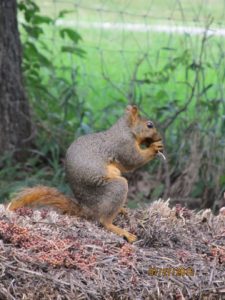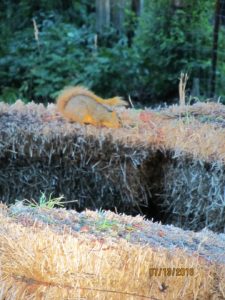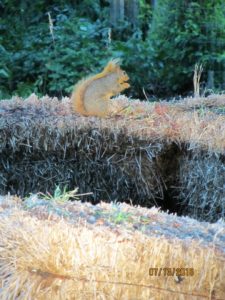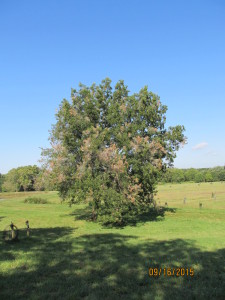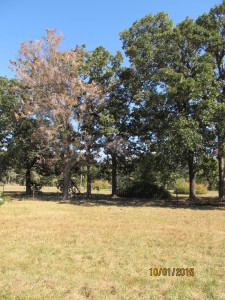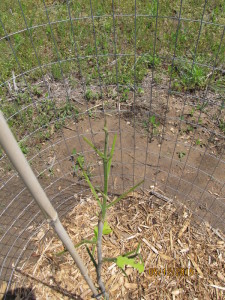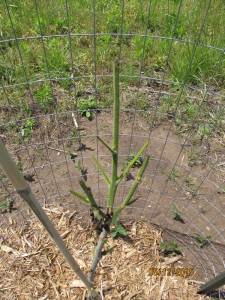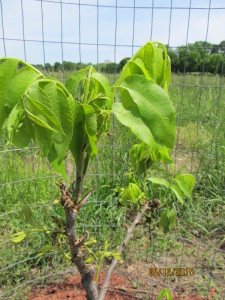After placing some sorghum grain on top of a pile of straw bales intended for the various birds to nibble on, this brazen little guy discovered the location and decided to help himself.
One night when I returned from town at about 10 pm there were four raccoons – three babies and one adult – sitting on the straw bales helping themselves. When I shouted at them, two babies just stared back at me with their bandit eyes.
